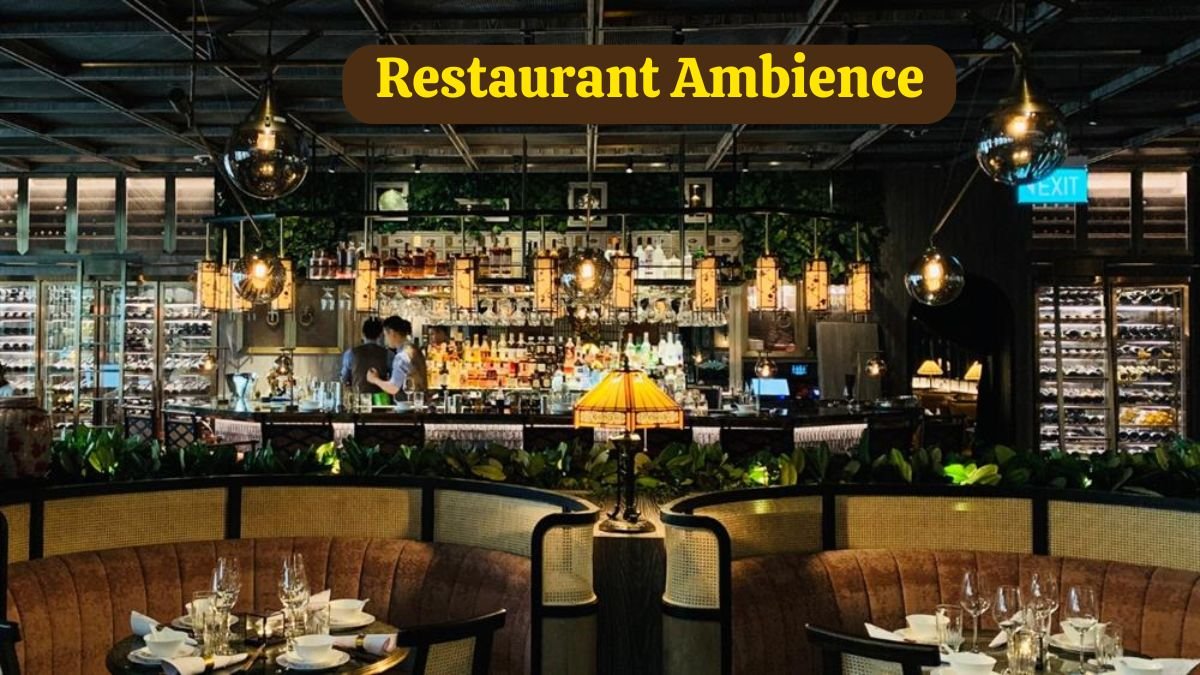How Restaurant Ambience Shapes Customer Experience: From Lighting to Music and Beyond. When we eat at a good restaurant, it’s not just the taste of the food, but every aspect of the ambiance that stays etched in our memory. The garnishing of the plates, the smile of the waiter, the color of the walls – and most importantly – the music and lighting. The combination of music and lighting affects our mood and experience in a way that is often beyond words.
The role of music in restaurant ambiance
Music is not just a treat to the ears, but it is an energy that transforms our state of mind. Several studies suggest that if the right playlist is played, customers are not only more satisfied, but their spending habits also change.
According to a study in the Journal of Retailing, when light, upbeat music is played in a restaurant, customers spend an average of 15% more.
The beats and tempo of the music set the mood of the customer. Loud and energetic music makes people feel more social and energetic, while slower and softer tones create a sense of calm and intimacy – especially suitable for couples or families dining together.
If the music genre ties in with the restaurant’s brand identity, the experience becomes more authentic. For example, classic rock or pop hits may work well in a casual diner, while classical music or jazz can add elegance to a fine dining restaurant.
Research from Cornell University shows that the volume level of the music also affects the experience. While loud music encourages people to eat and drink faster, soft music encourages customers to sit 30% longer, which leads to an increase in the average bill.
The impact of lighting on a restaurant’s ambiance
Lighting is just as important as music. It determines how warm, cozy, romantic or modern a restaurant will feel.
During the day, natural lighting makes the dining experience authentic. The touch of sunlight coming through open windows is soothing. But in the evening, if bright overhead lights are replaced with soft dim lights, such as table lamps or candlelight, the atmosphere becomes even more intimate.
The positioning of lights also plays a big role. If you want to focus on a particular dish – such as a chef’s special offering – then shining a light spotlight on it has been seen to increase sales by about 20%.
Apart from this, the color temperature i.e. the nature of light also affects people’s mindset. Light yellow-orange tones give warmth and comfort, while cool shades of blue or white give a sense of modernity and energy.
When music and lighting combine
When music and lighting work in harmony with each other, the entire dining experience becomes a beautiful creation. As the evening deepens, the tone of the lighting and music should also change.
For example, if a restaurant has bright lights and soft background music during the day, by night you can change it to slow jazz or soft classical music and warm, dim lighting – giving customers an exciting and relaxing experience.
For special occasions like birthdays, colour-changing lights and music synchronization add magic to the ambiance. This not only makes the restaurant unique but also creates a deep memory in the customer’s mind.
A report by DineEquity states that when a restaurant creates an ambiance that is in line with its customers’ expectations, customer satisfaction increases by 20%.
Practical tips – how to implement these changes
Understand the brand identity:
Choose the music and lighting according to your restaurant’s theme and target audience.
Get customer feedback:
Getting feedback on the ambiance is important. This helps you understand what kind of experience your customers prefer.
Make seasonal and seasonal changes:
Changing the music and lighting according to day and night, winter and festivals creates a new experience every time.
Train the staff:
It is also important to teach the staff how they can enhance the ambiance – such as changing the music or adjusting the lighting at the right time.
Conclusion
A memorable dining experience is not just made up of delicious food, but also of musical tunes and the right lighting. Understanding the impact of music and lighting and implementing them correctly is a must for every restaurant owner. This art, when mastered correctly, not only keeps customers coming back, but also spreads the experience to others. After all, the purpose of a restaurant is not just to fill the stomach, but also to satisfy the soul – and lights and music do this very well.
